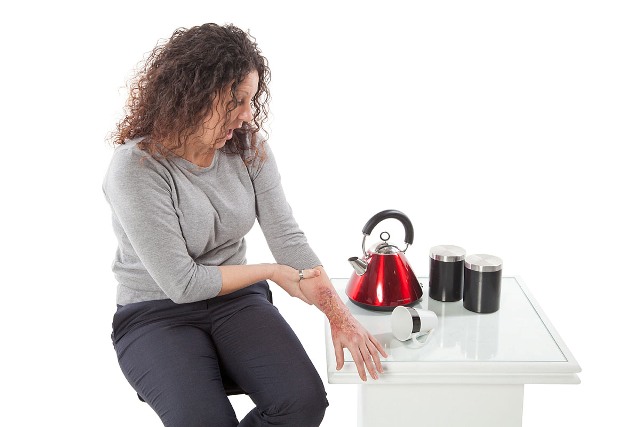How to treat burns: A workplace guide
Date: Friday, 22 January 2016. -
Blog, First Aid, Courses, Training, Health & Safety
Every employer has a duty to assess the potential risks and hazards in their business in order to ensure the welfare of their staff.
These will naturally differ depending on what the business does and the environment employees are expected to work in. In this post, we will focus on how to prevent and treat burns.
Where are burns likely to occur?
The risk of burns is evidently greater in environments such as kitchens and factories, where the machines and appliances used will naturally be hot. However, they can also occur in less obvious places, such as an office - for example, someone could easily burn themselves when using a kettle to make a cup of tea or coffee.
All of these potential hazards must be taken into account when carrying out health and safety assessments.
What should you do next?
Prevention
You can guard against burn hazards by training all staff how to use their equipment safely. There should be clear processes in place for all new starters to be shown how equipment works, while you may also wish for a more experienced staff member supervise them when they first use the items in question.
Our health and safety courses are a useful starting point to teach your employees about the importance of safe, consistent processes, particularly when it comes to working in environments where they will be exposed to high temperatures.
The fire safety procedures for your premises should also be a key concern. It is a legal requirement that you inform all employees of what to do in the event of a fire.
A lot of this is basic knowledge that most of us will know, such as not using lifts or stopping to collect belongings during an evacuation. However, every work environment is different and you will want to ensure you have covered everything in detail. Our fire safety courses are an excellent starting point, particularly if you are new to running a business and want to make sure you have got everything covered.

Treatment
No matter how many measures you put in place, accidents happen in every work environment and you need to be prepared to assist any staff member who requires medical attention after a burn.
The first step is to run the burn under cold water for at least ten minutes. For minor burns this could be all you need to do, as the soothing temperature will deal with the pain and the injury will heal naturally.
Your business will also have a first aid kit on site, and as part of your risk assessment you should consider what this kit will contain.
We recommend that every business has some form of dressing in their kit to treat wounds, but burns are slightly different to cuts and grazes. Many first aid kits will contain bandages, but these may not be suitable for burns as there may be fibres that can get stuck to the injury and make things worse.
The best thing to wrap a burn in is actually cling film, as this will do an excellent job of protecting the injury. You may not need to include this in your first aid kit. For example, if you work in a kitchen you are likely to have cling film to hand anyway. However, you may want to include some non-fluffy dressings in your kit if burns have been identified as a potential hazard.
It is best to avoid touching the burn at all if possible. This includes not popping or squeezing any blisters, not applying cream to the affected area and not peeling off any material that has stuck to the skin. Having disposable gloves in your first aid kit will make this easier.
Simply carry out the two steps above and seek further medical assistance if the injury appears to be more serious. This is particularly important if the burns cover a large area of the victim’s body, or if it affects areas such as the face, hands, feet or genitals.
Get more advice
If you’d like us to help you ensure your business is fully protected against burn hazards and is prepared to deal with any accidents, get in touch today and ask us about the courses we offer.
